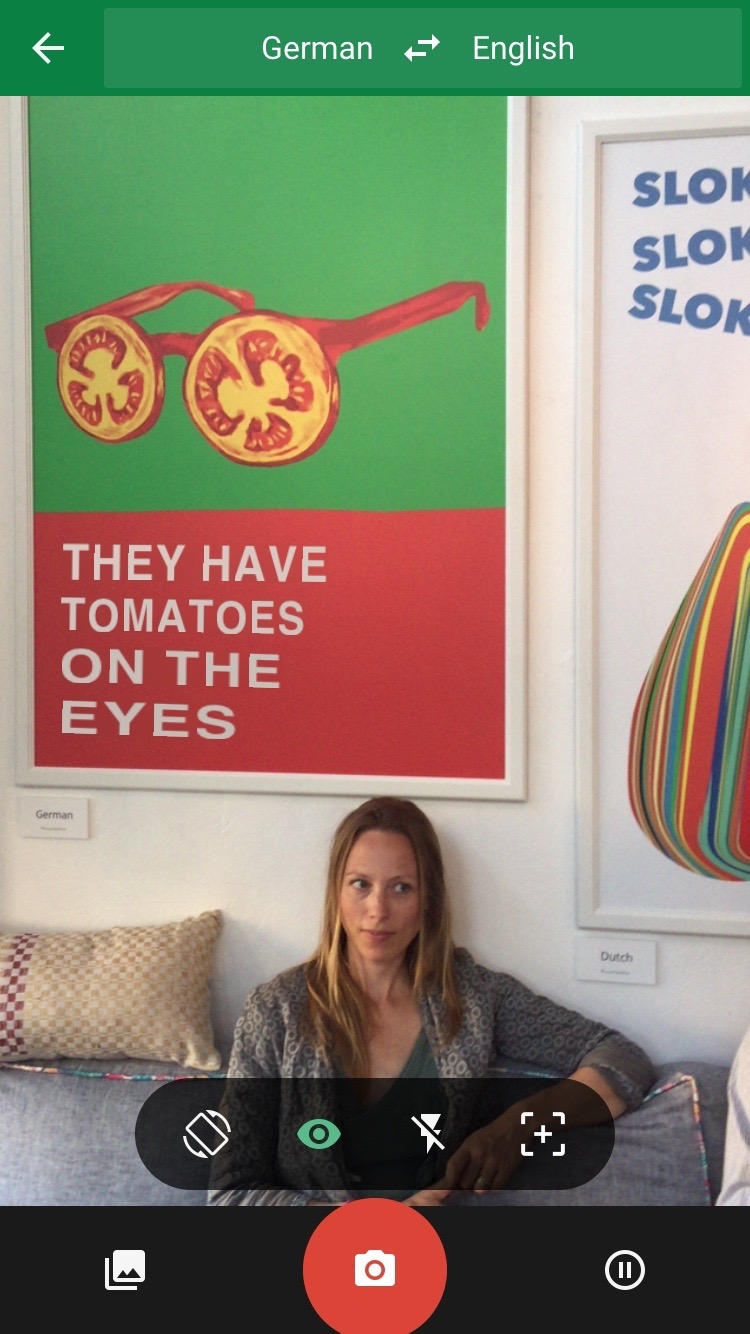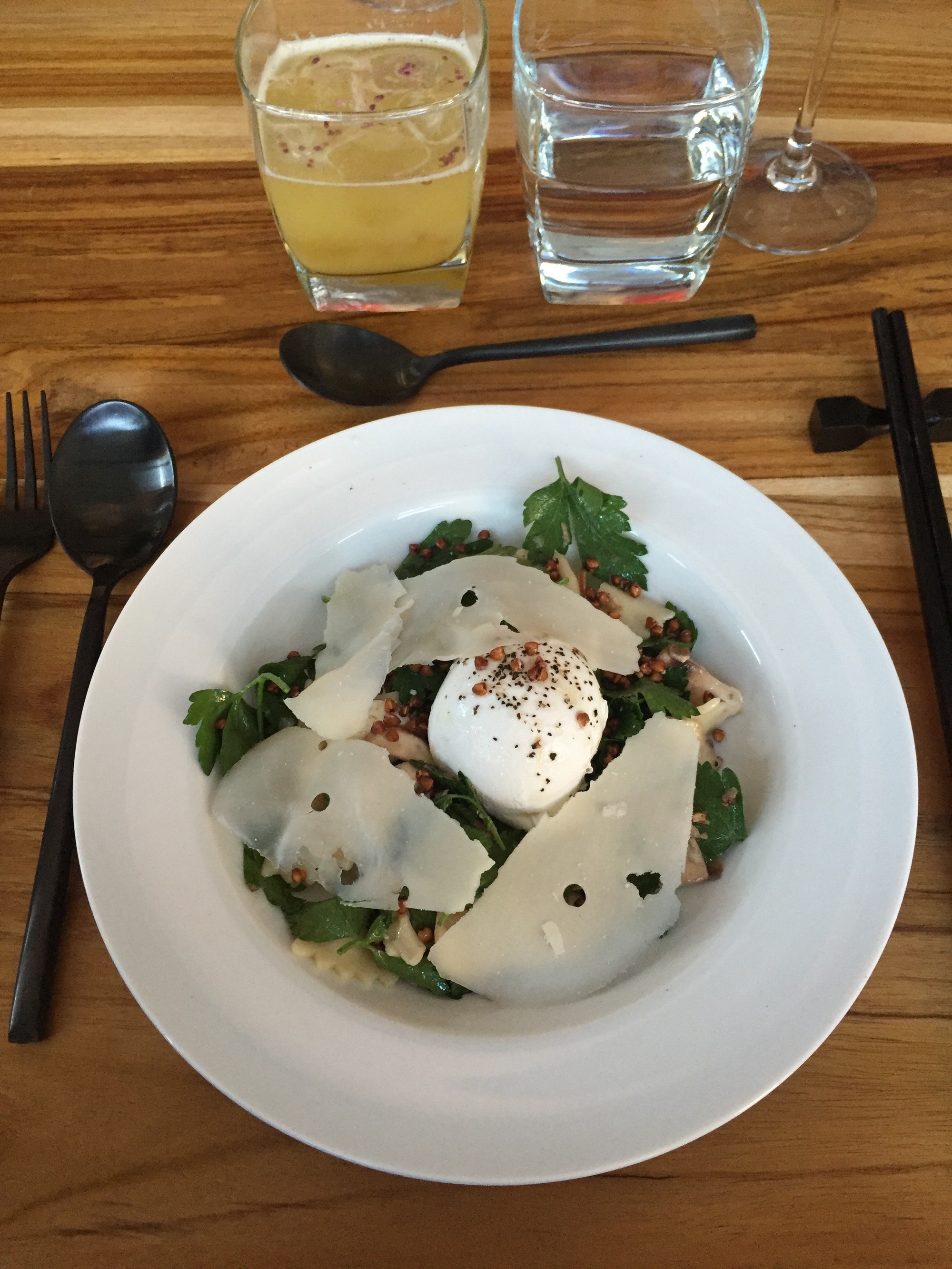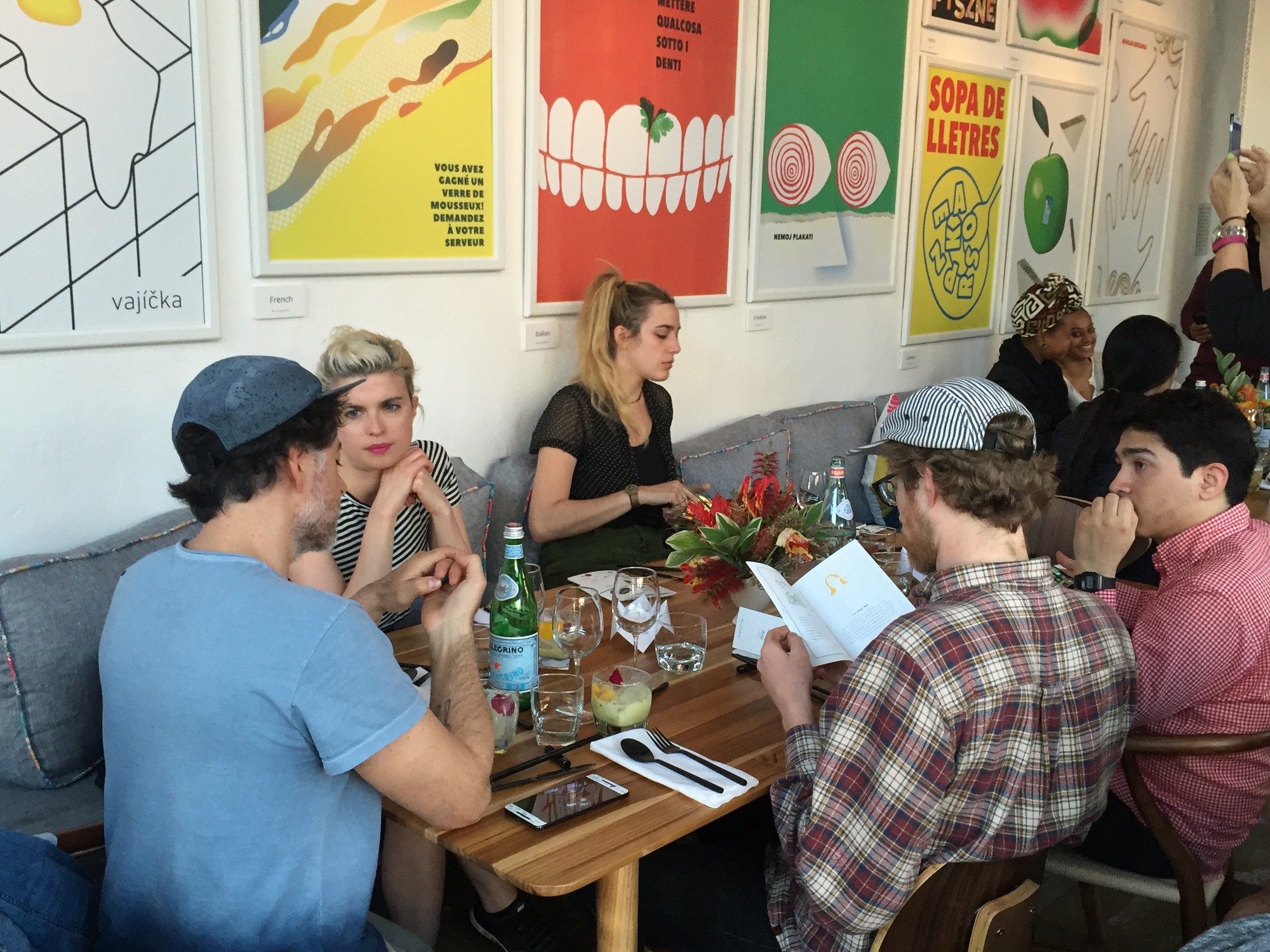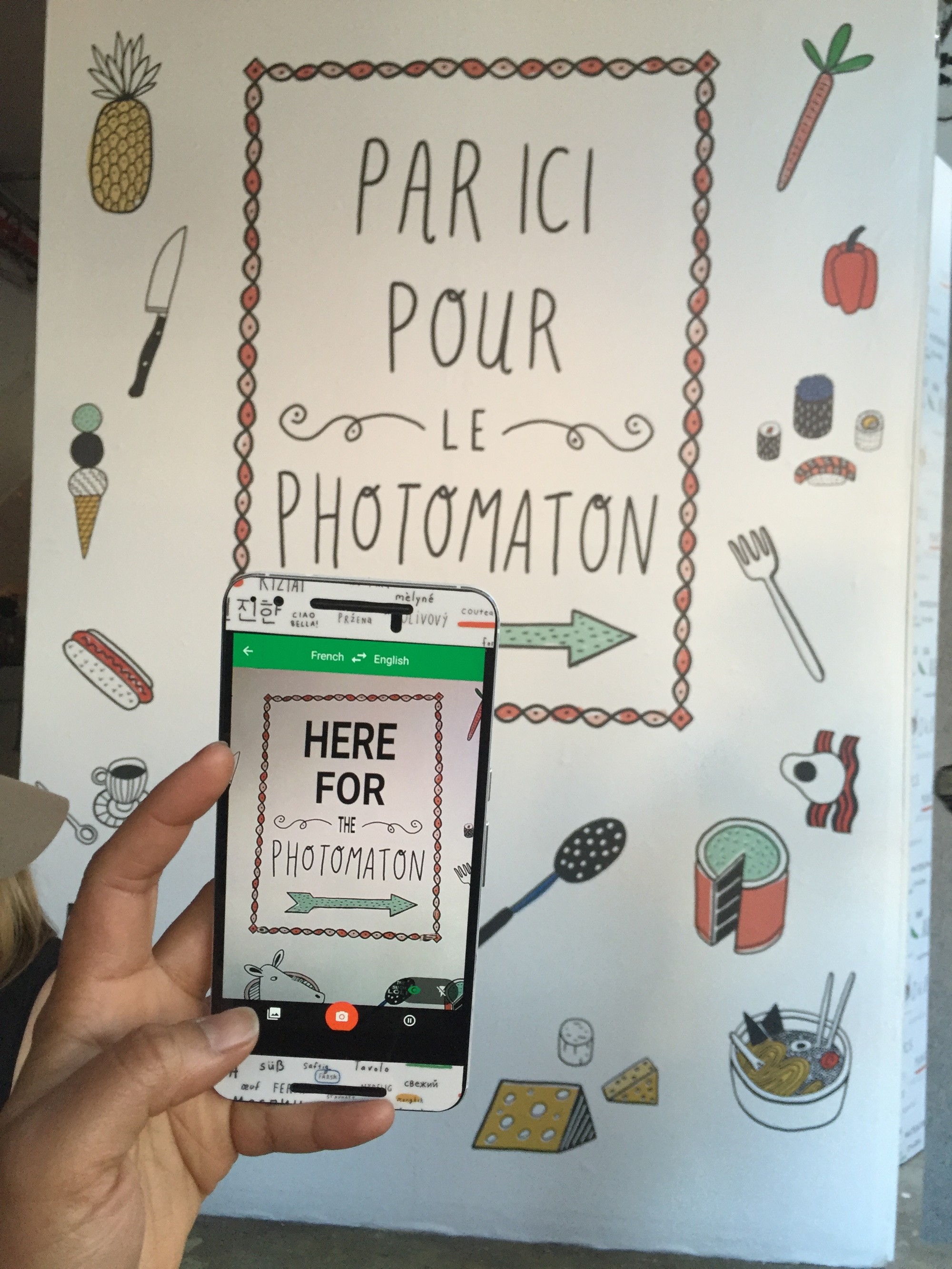Though, I generally refuse to indulge out-of-town guests who arrive starry-eyed with dreams of visiting the Empire State Building or the Statute of Liberty, I do take them on a MTA tour of the five boroughs. I find comfort and a sense of belonging in a city, that like me, wears and values diversity. Living in New York City, full of neighborhoods that celebrate people’s rich histories and immigration stories, is one of the best ways to see and taste the world.
On these visits, I zip guests between Chinatown, Koreatown, Little Italy, Little Odessa, and Little Guyana. We drink, we eat, we takes pictures. We get lost, then found. And often in these ethnic enclaves, we Google Translate. We hold our phones up to signs written in Chinese and, thanks to a technology I’ll never understand, the characters transform to English on our screens. 荔枝 becomes lychee. 糖苹果, sugar apple, and we, for a moment, become a bit more cosmopolitan.
 Photo by Hafizah Geter
Photo by Hafizah Geter
My relationship with Google Translate has matured over the years. In the beginning, I used it translate elementary-level sentences for my college Spanish classes, then to translate Pablo Neruda’s poems and a few Marc Anthony songs (it was a phase). Simple. That, however was the early aughts. This year, Google Translate turned ten years old. To celebrate, they built a 4-day pop-up restaurant at the Old Bowery Station in the heart of NoLita, which offered a lucky few a multilingual dining experience curated by a different guest chef each night. The restaurant, coyly dubbed Small World, has been free and open to the public; or at least, to those lucky to sign up for tickets in the 15-minute reservation window before the event reached capacity. The 103 languages that Google Translate can translate, read, and speak were represented through the wallpaper and the colorful posters on the wall. Each table got a server from another country—in my case, Russia—who spoke to guests in their native tongues.
On opening night, Friday, April 15, Chef Gerardo Gonzalez was working with a team of tastemakers to bring together elements from Japan, Peru, and the Middle East that included Andy Baraghani, formerly of Estela; Josh Russ Tupper and Niki Russ Federman of Russ & Daughters; Atushi Numata of Ni Japanese Delicacies; and mixologist Sam Anderson of Mission Chinese. Each menu was offered in a foreign language. Mine was in French.
 One of the standout dishes of the evening was the salade de champignons, a kasah salad with shaved raw crimini, parsley, caramelized onions, bow tie pasta, poached egg. Photo by Hafizah Geter
One of the standout dishes of the evening was the salade de champignons, a kasah salad with shaved raw crimini, parsley, caramelized onions, bow tie pasta, poached egg. Photo by Hafizah Geter
Gonzalez’s menu offered starters like pouple froid (octopus ceviche with hominy, chayote, ume, and puffed brown rice), boules de viande et riz (veal and rice meatballs with sour plum, tomato sauce), and salade de champignons (kasah salad with shaved raw crimini, parsley, caramelized onions, bow tie pasta, poached egg). We ate gâteau de légumes-racines (lotus root cake with soba noodles, sobacha, dashi, fresh fried lotus root), poulet avec riz (fava bean and herb pilaf with green garlic, braised chicken, yogurt), and soupe de truite avec coco (smoked sable and trout roe coconut chowder with fresh challah bread). For dessert, there was pudding de thé (hojicha pudding with guava, cherry blossoms), gâteau de crème glacée (saffron and cardamom ice cream sandwiches), and crêpe fourrée de fruits et fromage (three masa flour blintzes filled with fresh ricotta, passion fruit, sweet tomatillios, and sour plum).
Along with Japanese, French and Swedish beers and German, French, and Spanish wines, Mixologist Sam Anderson stirred up saké et fruits, a cocktail comprised of Yamahi saké, coconut, orange blossom, matcha, fresh pineapple and lime juice. Anderson also created a thé vert glacé avec coco, a fresh and tropical mocktail comprised of cold brewed green tea, toasted coconut, and sesame leaf.
 Guests mingled at communal tables with menus written in different languages. Photo by Hafizah Geter
Guests mingled at communal tables with menus written in different languages. Photo by Hafizah Geter
To emphasize our global interconnectedness, parties sat at small communal tables with up to five other guests. I was seated with a social media duo from Zagat (a subsidiary of Google), including its senior social media manager Amanda Spurlock, who—between bites, and helping me correct my mispronunciation of “Zagat”—was hard at work filming clips on a cellphone for Zagat’s Small World promo video . Also seated with me was Leslie McGhee, associate director of finance and human resources at the non-profit Make the Road New York and Stephanie Hannon, the chief technology officer of Hillary Clinton’s 2016 presidential campaign (and incidentally, the first woman to hold the title of CTO on a major presidential campaign).
“It’s an interesting exploration of technology and food to combine the Google Translate app with a dining experience. The flavors are plentiful and rich,” remarked Hannon, 42.
For McGhee, 31, the dining event was a way for her to transport to new culinary landscapes, even if for only a few hours. “In one evening, I was able to experience Japanese, Peruvian, and Persian culture through each region’s rich spices and flavors. Eating in a restaurant surrounded by 103 languages pasted on the wallpaper and posters turned an everyday activity into something more: conscious dining,” she says. “We were not just eating dinner; we were also learning about and celebrating other cultures. It was an important reminder of how interconnected we all are, especially in a place as diverse as New York City.”
At the end of the evening, like a true host, Chef Gonzalez greeted the crowd and introduced each member of his team, who shared personal stories of what food and dining means to them. Andy Baraghani, a chef and senior food editor at Bon App ét it , shared his personal connection with the food he helped prepare.
“I’m first generation; my parents are from Iran and I grew up eating Persian food everyday,” he said. “It was the last type of food I ever wanted to learn how to cook. Four or five years ago, I was working at Saveur and they wanted to do a story on Iran, which I thought was not a great idea. But I ended up adapting my mother’s recipes and through that process became really obsessed with Persian food, and I realized just how special it is.”
 The GIF photo booth was almost as popular as the multi-national food. Photo by Hafizah Geter
The GIF photo booth was almost as popular as the multi-national food. Photo by Hafizah Geter
By the close of the night, everyone had glassy eyes and wonderfully exhausted taste buds. Most had taken advantage of the GIF photo booth by Bosco at least once. Instead of angry bosses, smelly subways, and rising rents, we left wearing Baraghani’s words around our necks like jewelry passed down through generations. I imagine more than one of us left thinking about our parents and grandparents, and the histories passed down as they made our school lunches and received us home for dinners.
Perhaps the greatest reminder that the Small World dining experience provided came from Chef Gonzalez himself. In a world where cultures often clash or war, Gonzalez brought together people from different cultures, experiences and palates to create an experience that reminded us that whether you say “bon appétit,” “dobrou chut,” or itadakimasu,” food is love in every language.
A Small World was curated by chefs JJ Johnson of the Cecil, Miguel Trinidad of Jeepney, Andre Lima of BOS BBQ, Aaron Arizpe of Chefs Club, Danny Bowen and Angela Dimayuga of Mission Chinese, Andy Ricker of Pok Pok, Paolo Laboa of Bistro Don Giovanni, and Iñaki Aizpitarte of Le Chateaubriand, Einat Admony of Balaboosta, Liz Kwon of White Tiger, Mads Refslund cofounder of Noma, and Donal Crosbie of Hudson Hound and The Bailey. While the series comes to a close today, the flavors of world remain open and only a train ride away in the wonderful boroughs of New York City.










